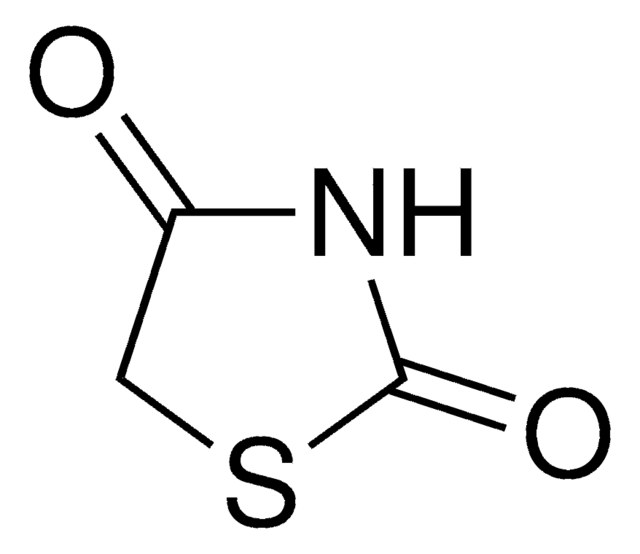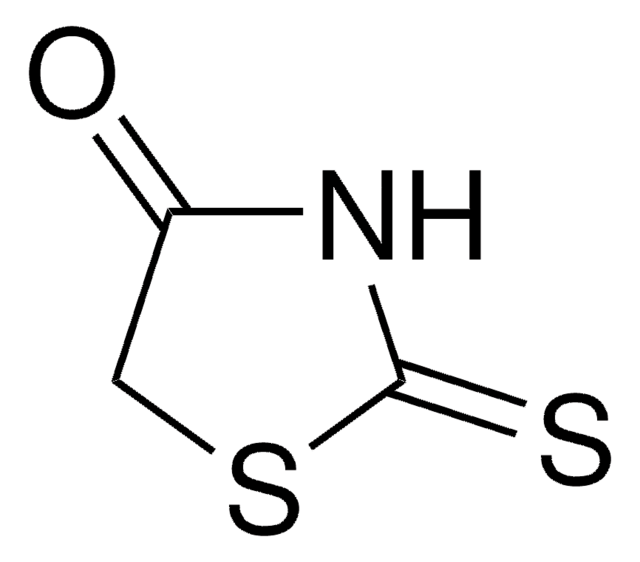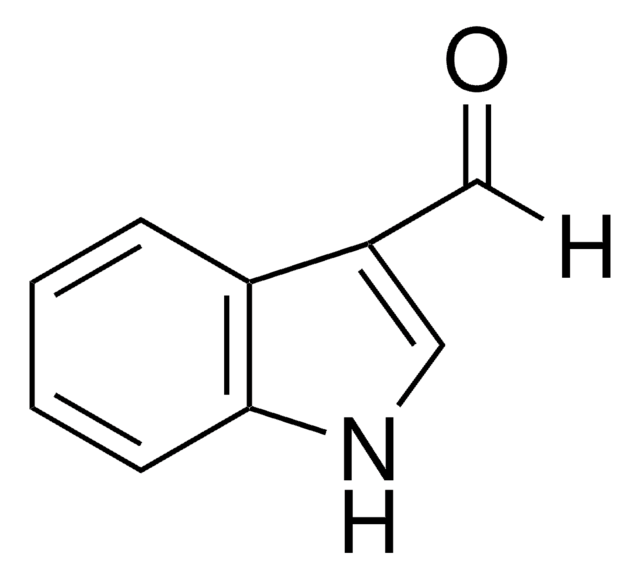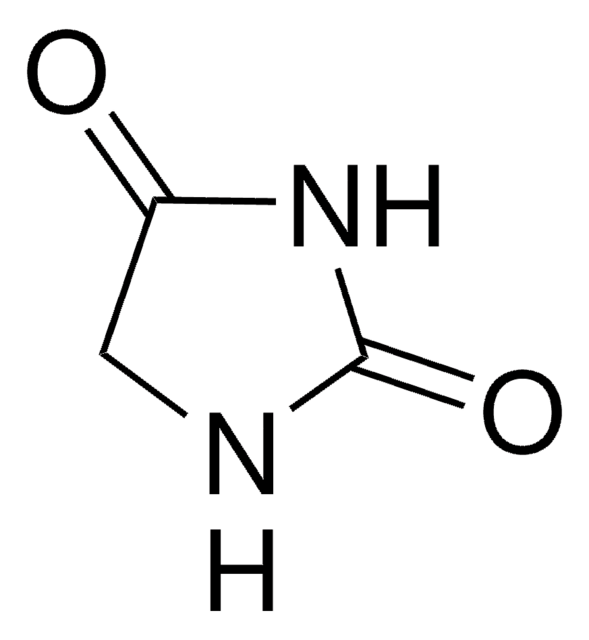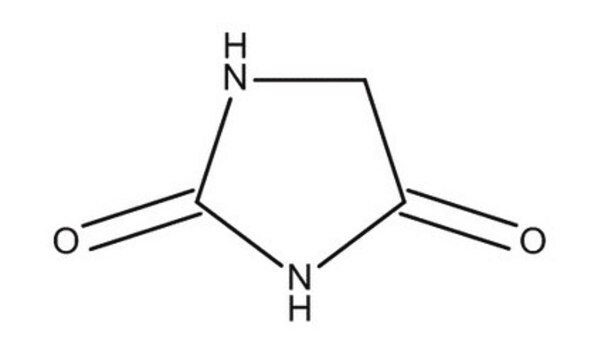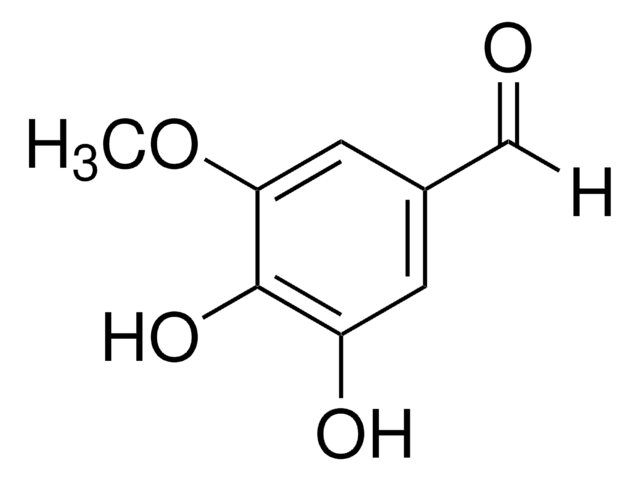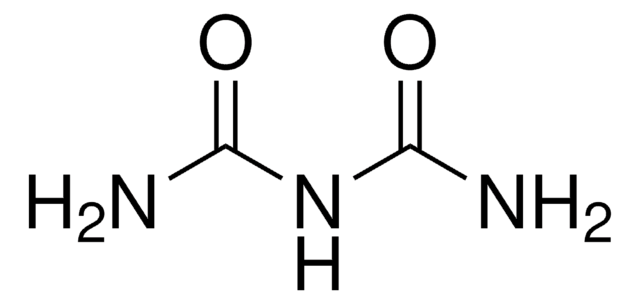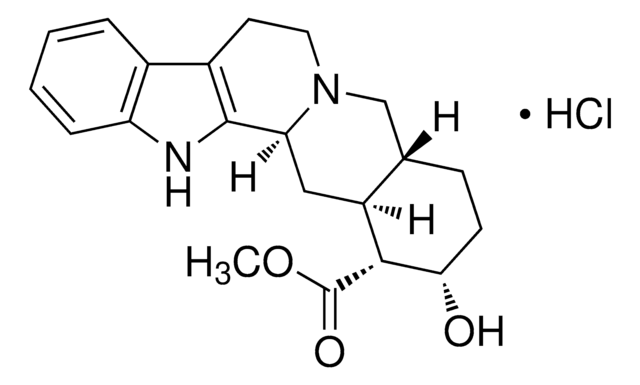Wichtige Dokumente
T30406
2-Thiohydantoin
99%
Synonym(e):
2-Thioxo-4-imidazolidinone, NSC 11772
About This Item
Empfohlene Produkte
Dampfdichte
4 (vs air)
Qualitätsniveau
Assay
99%
mp (Schmelzpunkt)
229-231 °C (dec.) (lit.)
SMILES String
O=C1CNC(=S)N1
InChI
1S/C3H4N2OS/c6-2-1-4-3(7)5-2/h1H2,(H2,4,5,6,7)
InChIKey
UGWULZWUXSCWPX-UHFFFAOYSA-N
Anwendung
- Drugs with antidiabetic activity
- Barbituric acid and thiohydantoin derivatives with antimicrobial activity
- Possible anticancer agents
- Fibroblast growth factor receptor 1 kinase inhibitors
- HIV-1 integrase inhibitors
Reactant for persilylation
Signalwort
Warning
H-Sätze
Gefahreneinstufungen
Acute Tox. 4 Oral
Lagerklassenschlüssel
11 - Combustible Solids
WGK
WGK 3
Flammpunkt (°F)
Not applicable
Flammpunkt (°C)
Not applicable
Persönliche Schutzausrüstung
dust mask type N95 (US), Eyeshields, Faceshields, Gloves
Hier finden Sie alle aktuellen Versionen:
Analysenzertifikate (COA)
Die passende Version wird nicht angezeigt?
Wenn Sie eine bestimmte Version benötigen, können Sie anhand der Lot- oder Chargennummer nach einem spezifischen Zertifikat suchen.
Besitzen Sie dieses Produkt bereits?
In der Dokumentenbibliothek finden Sie die Dokumentation zu den Produkten, die Sie kürzlich erworben haben.
Unser Team von Wissenschaftlern verfügt über Erfahrung in allen Forschungsbereichen einschließlich Life Science, Materialwissenschaften, chemischer Synthese, Chromatographie, Analytik und vielen mehr..
Setzen Sie sich mit dem technischen Dienst in Verbindung.